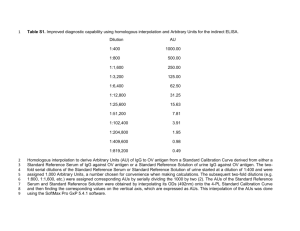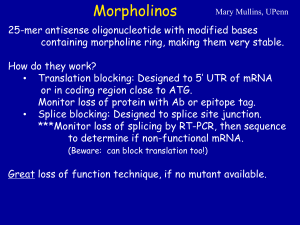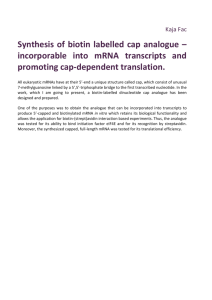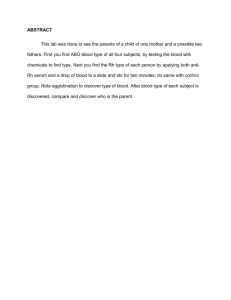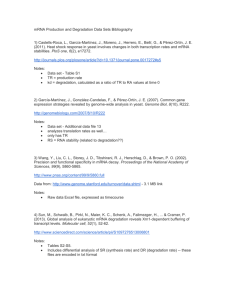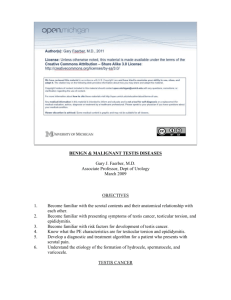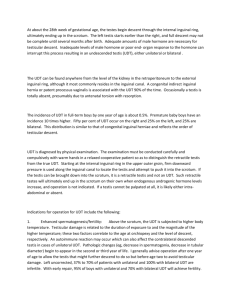Luke_Rothermel_Luke_Rothermel_
advertisement
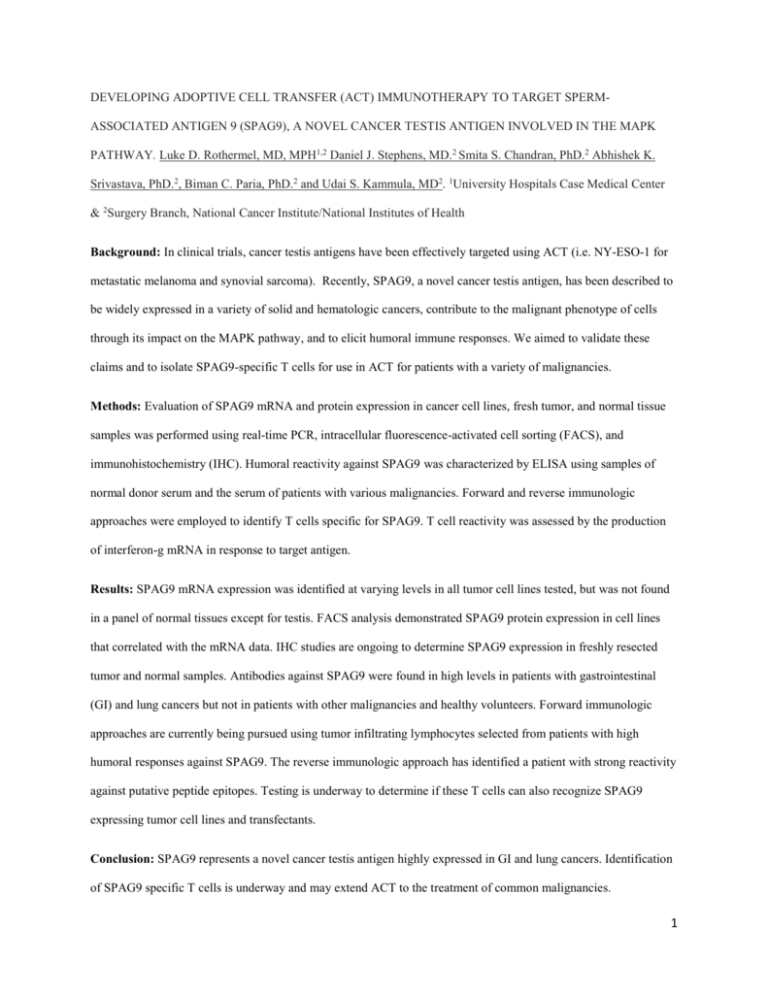
DEVELOPING ADOPTIVE CELL TRANSFER (ACT) IMMUNOTHERAPY TO TARGET SPERMASSOCIATED ANTIGEN 9 (SPAG9), A NOVEL CANCER TESTIS ANTIGEN INVOLVED IN THE MAPK PATHWAY. Luke D. Rothermel, MD, MPH1,2 Daniel J. Stephens, MD.2 Smita S. Chandran, PhD.2 Abhishek K. Srivastava, PhD.2, Biman C. Paria, PhD.2 and Udai S. Kammula, MD2. 1University Hospitals Case Medical Center & 2Surgery Branch, National Cancer Institute/National Institutes of Health Background: In clinical trials, cancer testis antigens have been effectively targeted using ACT (i.e. NY-ESO-1 for metastatic melanoma and synovial sarcoma). Recently, SPAG9, a novel cancer testis antigen, has been described to be widely expressed in a variety of solid and hematologic cancers, contribute to the malignant phenotype of cells through its impact on the MAPK pathway, and to elicit humoral immune responses. We aimed to validate these claims and to isolate SPAG9-specific T cells for use in ACT for patients with a variety of malignancies. Methods: Evaluation of SPAG9 mRNA and protein expression in cancer cell lines, fresh tumor, and normal tissue samples was performed using real-time PCR, intracellular fluorescence-activated cell sorting (FACS), and immunohistochemistry (IHC). Humoral reactivity against SPAG9 was characterized by ELISA using samples of normal donor serum and the serum of patients with various malignancies. Forward and reverse immunologic approaches were employed to identify T cells specific for SPAG9. T cell reactivity was assessed by the production of interferon-g mRNA in response to target antigen. Results: SPAG9 mRNA expression was identified at varying levels in all tumor cell lines tested, but was not found in a panel of normal tissues except for testis. FACS analysis demonstrated SPAG9 protein expression in cell lines that correlated with the mRNA data. IHC studies are ongoing to determine SPAG9 expression in freshly resected tumor and normal samples. Antibodies against SPAG9 were found in high levels in patients with gastrointestinal (GI) and lung cancers but not in patients with other malignancies and healthy volunteers. Forward immunologic approaches are currently being pursued using tumor infiltrating lymphocytes selected from patients with high humoral responses against SPAG9. The reverse immunologic approach has identified a patient with strong reactivity against putative peptide epitopes. Testing is underway to determine if these T cells can also recognize SPAG9 expressing tumor cell lines and transfectants. Conclusion: SPAG9 represents a novel cancer testis antigen highly expressed in GI and lung cancers. Identification of SPAG9 specific T cells is underway and may extend ACT to the treatment of common malignancies. 1 Fig.1 (a) SPAG9 protein expression in representative cell lines Fig.2 ELISA SPAG9 showing high frequency of by FACS analysis; (b) correlation of SPAG9 mean fluorescence SPAG9 antibodies in the serum of patients with GI index (MFI) and SPAG9 mRNA copy number and lung carcinoma vs. other malignancies and normal donor serum Arbitrary units a. H1299 HepG2 SNU387 1500 **** Anti- SPAG9 serum antibodies (mU/ml) T cells SPAG9 (fluorescence) b. SPAG9 mRNA copies per b-actin (x104) 1000000 --H1299 100000 10000 HepG2-SNU387-- 1000 100 R² = 0.8938 1000 NS NS 500 366 NS 10 25 --T cells 1 0 28 17 10 0 1000 2000 3000 SPAG9 (MFI) n= Normal Donor Soft Tissue Sarcoma Renal Cancer 34 23 6 Cutaneous Carcinoma Melanoma (Lung and GI) 46 27 Fig 3. Microculture reactivity against SPAG9 peptides after 14 day in-vitro stimulation of peripheral blood lymphocytes (numbers on the x-axis correspond to the specific IFN mRNA Stimulation Index peptide used in testing; IFN=interferon gamma) 100 10 1 19 49 56 343 381 447 521 837 964 1016 Sensitizing SPAG9 peptides (n = 48 microcultures/peptide) ---------------------------------------------------------------------------------------- 2


